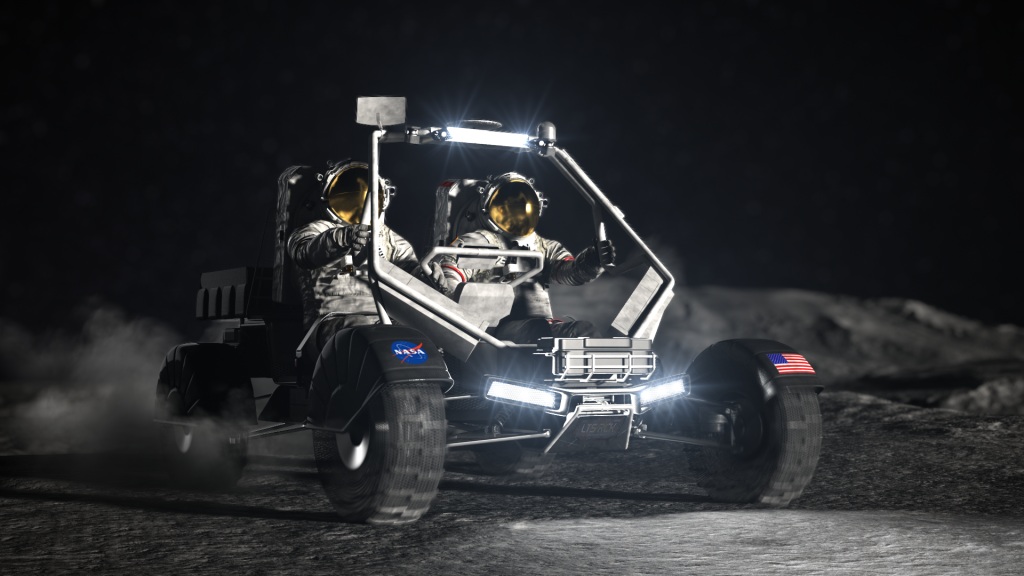NASA has officially chosen three new scientific instruments to study the moon, specifically its south polar region, as part of the upcoming Artemis mission. Two of these instruments will be mounted on a new Lunar Terrain Vehicle (LTV), and one will fly on a future moon-orbiting satellite.
The LTV, or rover, is believed to resemble a high-tech sports utility vehicle (SUV). It will carry two astronauts across the lunar surface, but it can also drive itself remotely when no one is aboard. This mission will mark the first time a rover has been on the moon in over 50 years.
Three private companies are building rover designs, including Texas-based Intuitive Machines, Lunar Outpost from Colorado, and California-headquartered Venturi Astrolab. NASA will choose one for a demonstration mission by late 2025. NASA’s Artemis program aims to send humans back to the moon for the first time since the Apollo missions.
NASA’s new moon toys
As for the instruments in question, the first is called the Artemis Infrared Reflectance and Emission Spectrometer (AIRES). This will be mounted directly on the LTV and will be used to detect minerals and volatiles (like water or carbon dioxide) by analyzing how sunlight reflects off the moon’s surface. According to NASA, AIRES will also create detailed maps showing what materials are present, especially around the satellite’s south pole.
The second instrument, Lunar Microwave Active-Passive Spectrometer (L-MAPS), will also be mounted on the rover. This will use ground-penetrating radar and temperature sensors to scan up to 40 meters underground. It will help locate buried ice and gain a deeper understanding of the moon’s subsurface structure.
The third and final piece of kit, Ultra-Compact Imaging Spectrometer for the Moon (UCIS-Moon), will be mounted on a future moon-orbiting satellite, not on the rover. This device will capture high-resolution images and scans of surface water, minerals, and assess how human activity (such as landings) may be affecting the moon. It will also help guide astronauts to areas rich in resources or scientific value.
Together, these instruments will help map resources for future missions. They will also support astronaut safety and planning by understanding the terrain and environment. The tools will further help contribute to science by revealing how the moon evolved and what it tells us about other rocky planets.
Giant leap for mankind
Overall, the move marks a critical step in NASA’s effort to build infrastructure on and around the moon to support long-term exploration. The development is part of a broader effort to return humans to the moon, explore more deeply than ever before, and eventually prepare for missions to mars.
“The Artemis Lunar Terrain Vehicle will transport humanity farther than ever before across the lunar frontier on an epic journey of scientific exploration and discovery,” said Nicky Fox, associate administrator, Science Mission Directorate at NASA Headquarters in Washington.
“By combining the best of human and robotic exploration, the science instruments selected for the LTV will make discoveries that inform us about Earth’s nearest neighbor as well as benefit the health and safety of our astronauts and spacecraft on the Moon,” he added.
“Together, these three scientific instruments will make significant progress in answering key questions about what minerals and volatiles are present on and under the surface of the Moon,” said Joel Kearns, deputy associate administrator for exploration, Science Mission Directorate at NASA Headquarters.
“With these instruments riding on the LTV and in orbit, we will be able to characterize the surface not only where astronauts explore, but also across the south polar region of the Moon, offering exciting opportunities for scientific discovery and exploration for years to come,” Kearns stated.
